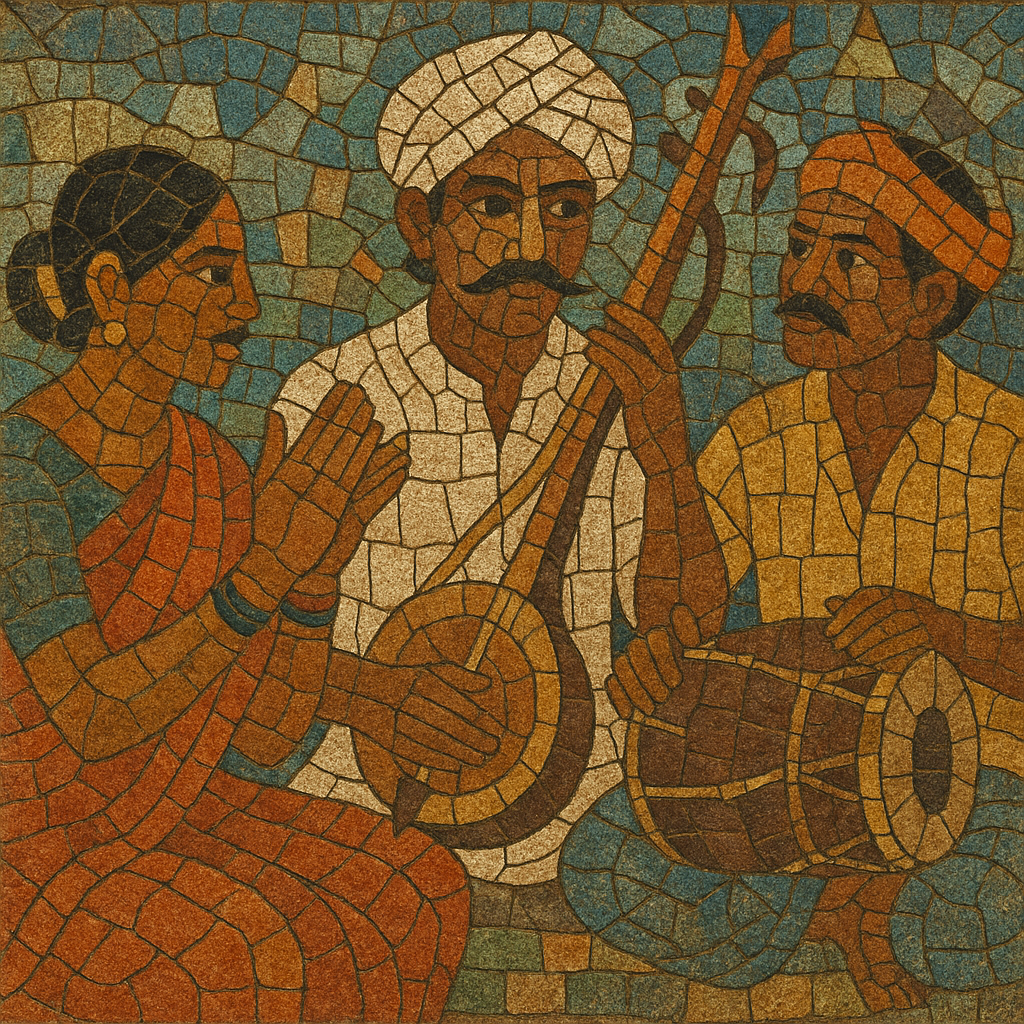Telugu folk music (Janapada Paatalu) comprises the traditional song and storytelling practices of Telugu-speaking communities in present-day Andhra Pradesh and Telangana, India. It includes narrative forms such as Oggu Katha and Burrakatha, dance-songs like Kolatam, seasonal festival repertoire (e.g., Bathukamma and Bonalu), work songs, and devotional pieces to village deities.
Musically it is primarily modal and melody-led, supported by drones and percussive grooves. Key sounds include the dappu frame drum, the rare multi-string Kinnera lute, handclaps, and local double-headed drums, with flutes and harmonium often added in modern settings. Lyrics are in Telugu dialects, vividly portraying agrarian life, love, devotion, social protest, and regional identity.
The roots of Telugu folk music are pre-modern, with documented narrative ballads and devotional singing emerging by the 12th–13th centuries during the Kakatiya era and in the wake of the Bhakti movement. Oral epics like Palnati Virula Katha, village deity cults (Maisamma, Pochamma), and ritual-dance forms such as Kolatam fostered a living tradition of call-and-response singing, percussive accompaniment, and community participation.
With print and gramophone technology, traveling folk troupes and stage dramas spread regional songs more widely. Community ensembles and storytellers adapted to urban audiences while retaining rustic dialects and narrative techniques. Folk idioms began to interface with art/classical currents and devotional formats.
From the mid-20th century, cultural fronts and people’s theatre used Telugu folk as a vehicle for social commentary, labor issues, and agrarian reform. Iconic balladeers popularized revolutionary folk, blending traditional meters with mass-chorus refrains and the dappu’s driving pulse. This period cemented folk music as a voice of the people as well as a cultural emblem of the region.
Telugu cinema and television absorbed folk tunes, rhythms (including the locally named teenmaar feel), and dialect turns of phrase, recontextualizing them in soundtracks and reality shows. Programs like "Rela Re Rela" and festival specials revived interest in rural repertory, while YouTube and independent labels enabled village artists and temple ritual singers to publish directly.
In the 2000s–2020s, the Telangana statehood movement reignited pride in folk traditions, highlighting instruments such as the Kinnera and spotlighting Bathukamma and Bonalu repertoires. Contemporary artists mix folk with pop, indie, and electronic production while preserving story-centric performance, regional prosody, and percussive dance grooves.


